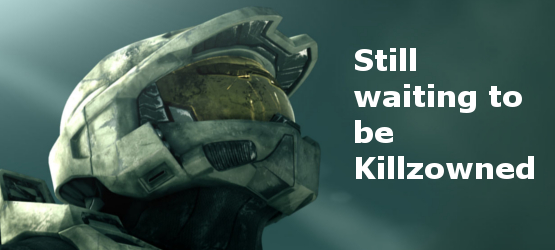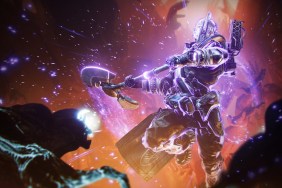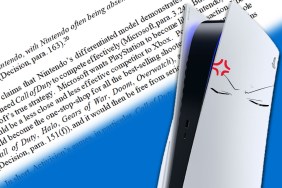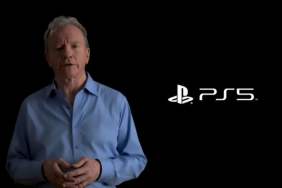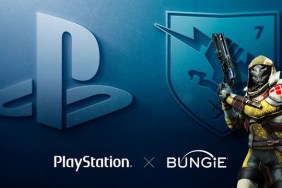Daily Reaction is a PSLS exclusive feature where Sebastian Moss & Dan Oravasaari discuss today’s most hard-hitting topics every single weekday.
Earlier today, Insomniac Games’ CEO Ted Price spoke about why he didn’t think Resistance was Sony’s Halo, stirring up the old topic of the ‘Halo Killer’. But why has Sony been so unsuccessful at creating their own massive FPS franchise? Daily Reaction discusses.
Seb: Obviously the term ‘Halo Killer’ is technically flawed, in that it’d be pretty darn hard to kill a game on another platform, but it’s used to describe Sony’s aim to create something that matched – or even surpassed – Halo’s incredible media hype and sales, thus making it less of a potent threat. And Halo was a huge threat, that ultimately gave Microsoft a massive lead in the FPS market, which was a major boost in this generation dominated by shooters and CoD. So why couldn’t Sony do it themselves?
Well, up until that point, Sony had no decent FPS developers under their studio umbrella and they were caught by surprise. They had platformers by the plenty, racers by the bucketload and even casual developers. But shooter specialists? Zilch.
When the Xbox launched at the end of ‘01, Halo was its flagship title. “This is why you should leave the biggest console ever and try something entirely new” it proclaimed. A roaring success, the game rocketed to the top of the charts and stayed there, meaning that Sony had to respond sharpish. But, of course, reacting to trends isn’t easy in gaming and it took them a while to bring out their big FPS – too long.
Killzone came out in late 2004, by which time Halo 1 had sold nearly 5 million, and Halo 2 was only a week away. It released to average reviews, which would have been ok if it had been by itself, but in the shadow of the reviewing love fest that was Halo 2 it had no chance of not being seen as a sub-par product. Subsequently, H2 made $125 million in a day, breaking all entertainment records.
Killzone 2 then wasn’t helped by the fact that it was delayed, made fun of for its fake trailer, wasn’t the greatest game of all time, and released while Sony was still trying to sell the PS3 for more than the price of a car. Halo 3 had already released 2 years before and was bigger than the second coming of Jesus.
In short, Sony missed the FPS train and took too long to respond. They never had a real chance at winning the shooter crown.
Dan: That is exactly the issue that Sony had during the FPS boom, they were slow to see the potential influence of games like Halo until it was way too late. Fans had already become initiated with the FPS through the Halo franchise, and for Sony to try and pull an audience of that size away from it, and their friends, to a completely different platform was ludicrous. They released Killzone on the PS2, a game that was geared as a gritty shooter that was admittedly beautiful for it’s time, yet failed to realize that a realistic shooter without a protagonist to stand behind, and online infrastructure, just could not stand a chance from an established franchise that had done every single one of those things better than any franchise that generation.
The reason Sony has always had issues surrounding shooters is that, from its roots, PlayStation as a console has never really pushed the concept of shared gaming. The original PlayStation released with 2 standard controller ports for couch play, while its competition the N64 was releasing with 4 ports, for party play – leaving Sony to later adjust and release a 4-way adapter. During the PS2 era, Sony did not include an ethernet port on their consoles, only an added adaptor later on when its competition (the Xbox) had one built in. It’s this ‘late to the game’ issue that Sony seems to have when it comes to connecting it’s userbase that has dropped them so far from their original stance, and prevented them from being able to dethrone the behemoth known as Halo.

When the PS3 released, it was pushed with a title that was called a “Halo Killer”, a term that became a death sentence. The title was Resistance, releasing on an overpriced, over engineered piece of hardware that just was not going to even be a blimp on Halo’s radar. Resistance was an amazing experience and is one of my favorite games this generation, but due to the problem that Sony was so late bringing together its users, the market for online FPS games had made a home on the Xbox, leaving all of Sony’s FPS’ to underperform. Even though the first Resistance sold incredibly well for a new IP on a new console, the online userbase didn’t have the legs Sony needed to have them move Resistance into “Halo Killer” status. There was just no way for any franchise to steal market share from Halo when Sony themselves seemed to barely understand what initially appealed to the market in the first place.
Seb: Yeah, Resi 1 sold a whopping 4 million, but that was more down to the lack of titles early on. Of course, like Price admitted, they changed R2 too much which really didn’t help, but it was never going to be Halo huge. Sadly the changes were made – and we don’t know if the fault lies with Sony or Insomniac – and that effectively killed the franchise.
Another attempt at seizing the FPS crown was with Haze. A PS3 exclusive new IP from shooter masters Free Radical of Timesplitters fame that even had Ubisoft handling the marketing instead of the terrible Sony guys. What could go wrong? Turns out one hell of a lot, because that game was downright awful, ending up making the PS3 look worse to FPS gamers than it had before.
Sony’s internal efforts to replicate the Halo model failed, and their partnerships failed. And, really, that should have been expected – they tried to rush out Killzone, changed Resi too much and Free Radical admitted they couldn’t handle the PS3. Was it a total failure? Of course not – Killzone has sold a decent amount, as did the original Resistance. But were any of them even remotely ‘Halo Killers’? Not even close.
There was only one thing they could have done that would have given them an edge, and that would have been to back the horse that in many ways did replace Halo – CoD. They should have been the ones to sign exclusive content and exclusive marketing deals with Activision, gaining traction with fans of the biggest shooter, and game, of the generation.
Dan: The issue that Sony has had overall since the release of Halo and the expansion of online play is that they are now trying to follow the trends instead of capitalize on them. Instead of spending millions trying to “kill Halo” they needed to push their own strengths and see the gaps in the industry that we were seeing. The death or drastic decrease in the JRPG presence in the US caused the emergence of the the Western RPG, and the major success of Mass Effect and RPG elements being placed in almost every genre. If Sony had instead focused on drawing in major RPG developers rather than trying to push FPS’ they might have been able to beat Halo, just not at its own genre.
So who would win in a fight, Master Chief, Joseph Capelli or Sevchenko? Place your bets in the comments below, and be sure to shoot your load at Seb and Dan on FFS.com.
